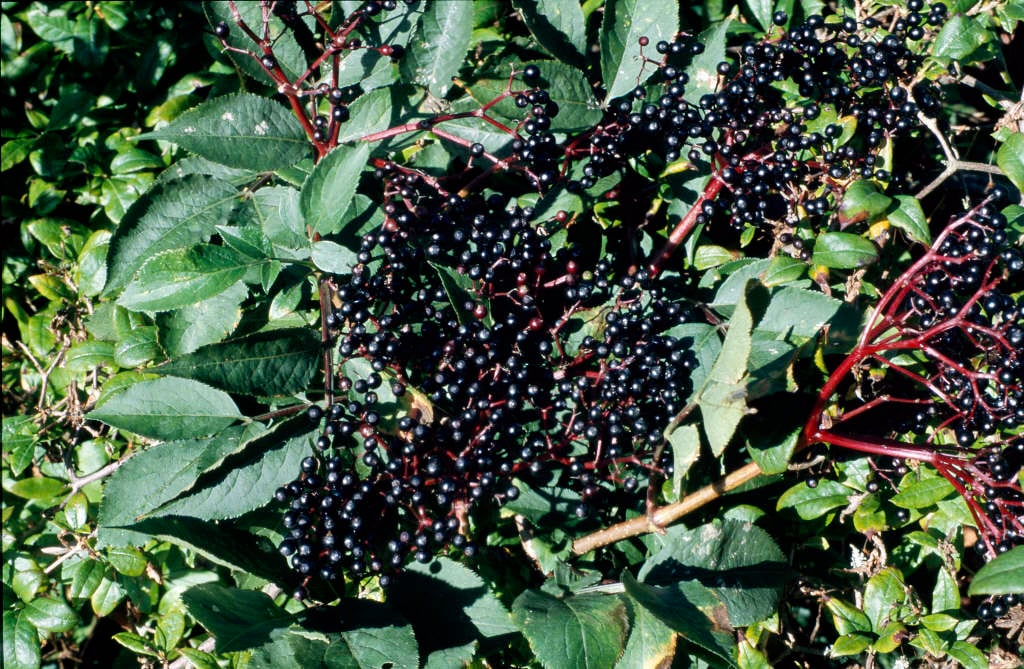Sambucus nigra
common elder
A bushy large shrub or small tree to 6m, with pinnate leaves turning pale yellow in autumn, flat sprays of fragrant cream flowers in early summer followed by small black berries
Other common names
actearn tree
see moreblack elder
black elderberry
boon tree
boor tree
bore tree
bour tree
bur tree
elderberry
European elder
European elderberry
pipe tree
Size
Ultimate height
4–8 metresTime to ultimate height
10–20 yearsUltimate spread
2.5–4 metresGrowing conditions
Moisture
Moist but well–drainedpH
Acid, Alkaline, NeutralColour & scent
| Stem | Flower | Foliage | Fruit | |
| Spring | Green | |||
|---|---|---|---|---|
| Summer | Cream | Green | ||
| Autumn | Yellow | Black | ||
| Winter |
Position
- Full sun
- Partial shade
Aspect
South–facing or North–facing or East–facing or West–facing
Exposure
Exposed or Sheltered Hardiness
H6Botanical details
- Family
- Viburnaceae
- Native to GB / Ireland
- Yes
- Foliage
- Deciduous
- Habit
- Bushy
- Potentially harmful
- Harmful if eaten, fruit/flowers edible if cooked. Wear gloves and other protective equipment when handling Pets (dogs, cats): Harmful if eaten, fruit/flowers edible if cooked - for further information and contact numbers regarding pets, see the HTA guide to potentially harmful plants
- Genus
Sambucus can be herbaceous perennials, deciduous shrubs or small trees, with pinnate leaves and umbels or panicles of small creamy-white flowers followed by red, white or black berries
- Name status
Correct
- Plant range
- Europe N Africa SW Asia
How to grow
Cultivation
Easy to grow in moderately fertile, humus-rich, moist but well-drained soils and also thrives on extremely chalky sites
Propagation
Suggested planting locations and garden types
- Wildlife gardens
- Coastal
- Low Maintenance
- Hedging and screens
Pruning
Pruning group 1. Will tolerate hard pruning to restrict the size
Pests
May be susceptible to aphids and glasshouse red spider mite
Diseases
May be susceptible to verticillium wilt and honey fungus
Get involved
The Royal Horticultural Society is the UK’s leading gardening charity. We aim to enrich everyone’s life through plants, and make the UK a greener and more beautiful place.
